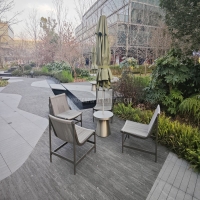Welcome to the website for landscape facilities products and knowledge.
How does the bin’s design prevent overflow or overfilling in high-usage scenarios?
In high-traffic environments like offices, parks, or public spaces, bins often face the challenge of overfilling, leading to unsanitary conditions and inefficiencies. Modern bin designs address this issue through several innovative features.
1. Capacity Sensors: Many smart bins are equipped with sensors that detect fill levels. When the bin reaches a certain capacity, it alerts maintenance staff or compacts the waste to create more space.
2. Compaction Technology: Some bins use built-in compactors to compress trash, significantly increasing their effective capacity. This reduces the frequency of emptying and prevents overflow.
3. Optimal Shape and Size: Designers prioritize tapered openings or narrower tops to discourage overfilling. This subtle design cue helps users avoid stuffing bins beyond their limits.
4. Durable Materials: High-usage bins are often made from robust, lightweight materials that resist deformation, ensuring they maintain their shape even under heavy loads.
5. User Feedback Systems: Advanced bins may include visual or auditory signals (e.g., LED lights or sounds) to indicate when the bin is full, encouraging proper disposal habits.
These design elements collectively ensure bins remain functional and tidy, even in the busiest settings. By integrating technology and thoughtful engineering, modern bins are revolutionizing waste management in public spaces.
Related search:

Recommendation
Metal structure rattan chair without armrests for single person, with woven seat and backrest.